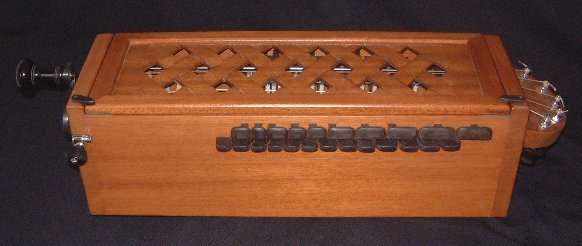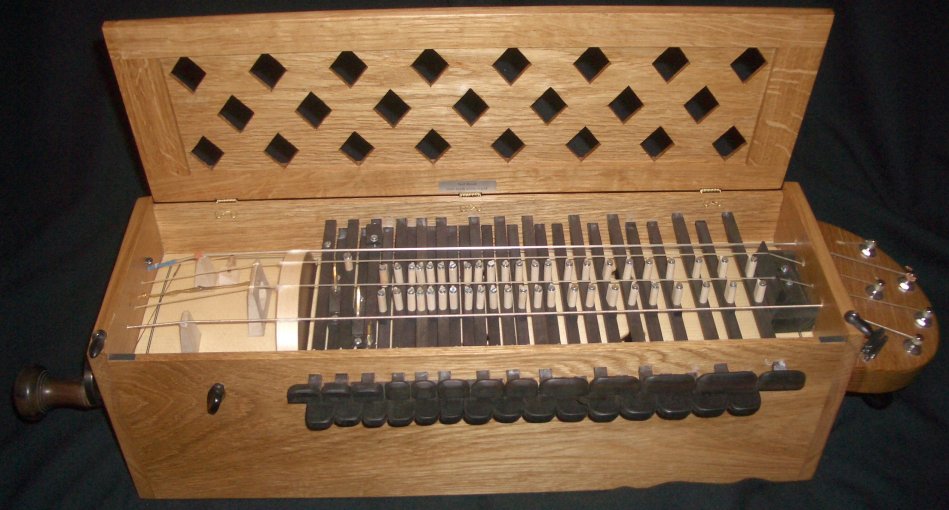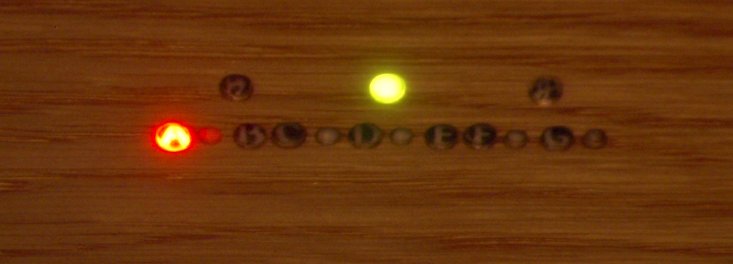
The Luttrell Psalter c 1340 shows two players of the instrument although the details of construction are unclear and appear to be impractical for a playable instrument.
By radically re-designing the construction, I have achieved a clear and relatively loud instrument which has all the musical qualities of the later hurdy-gurdies.
The normal stringing I use is as per the C/G hurdy-gurdy but without the "mouche" string.
Taper tuning pegs can be fitted if required but the ease of tuning with machine heads would seem to outweigh the compromise of historical accuracy.
To complete the usefulness of the instrument, a trompette is usually fitted. This is tensioned using an extra peg and a pulley system which allows control of the trompette with the lid shut.
The example below also has five extra keys at the top end of the normal keyboard. These keys operate devices which disengage strings as required allowing control of drones,trompette and melody strings in mid performance.

A further feature of this instrument is the built in Ken Whittman tuner .The holes through which the tuner indicators are viewed are filled with tiny acrylic windows giving a totally smooth exterior.

